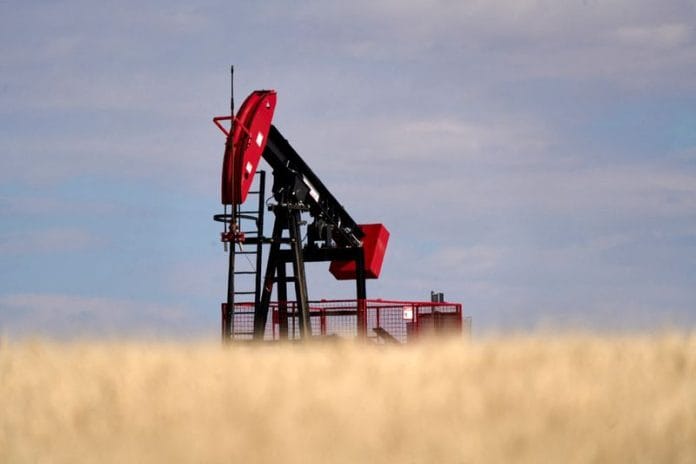By Georgina McCartney
HOUSTON (Reuters) -U.S. oil prices pared earlier losses on Tuesday after an official said U.S. President Donald Trump plans to restore his “maximum pressure” campaign on Iran in a bid to drive down Iranian oil exports to zero, which offset some weakness from tariff drama between Washington and Beijing.
The U.S. official told Reuters that Trump’s directive orders the U.S. Treasury secretary to impose “maximum economic pressure” on Iran, including sanctions and enforcement mechanisms on those violating existing sanctions.
U.S. West Texas Intermediate (WTI) crude was trading down 41 cents, or 0.6%, to $72.75 a barrel by 11:39 a.m. EST (1639 GMT). It fell more than 3% to its lowest since late December during the session, amid trade war fears between the U.S. and China.
Global benchmark Brent crude futures rose 18 cents, or 0.24%, to $76.14.
The reimposition of “maximum pressure” on Iran is capping losses from the tariff drama going on between Beijing and Washington right now, according to Phil Flynn, analyst at Price Futures Group.
“The reason why oil was down near the lower end of the trading range was the China retaliation, and it went back up because of the “maximum pressure” on Iran,” Flynn said.
WASHINGTON-BEIJING TARIFF DRAMA
Traders are eyeing efforts currently underway to schedule a call between Trump and Chinese President Xi Jinping, expected to take place on Tuesday, a Wall Street Journal reporter posted on X, citing White House trade adviser Peter Navarro.
A pause in previously announced tariffs on China will be discussed, the reporter said.
New 10% U.S. tariffs on Chinese imports took effect on Tuesday, spurring retaliatory tariffs announced by Beijing.
“We were down on the China retaliation, I think it’s the expected Trump-Xi call bringing us back up, and we kind of know how those go now, in terms of walking this all back,” said John Kilduff, a partner at Again Capital in New York.
The U.S. president suspended his threat of steep tariffs on Mexico and Canada on Monday, agreeing to a 30-day pause in return for concessions on border and crime enforcement with the two neighboring countries.
Those postponed tariffs include a 25% levy on all products from Mexico and Canada, with a 10% tariff on energy imports from Canada, all of which had been set to take effect on Tuesday.
Ongoing trade tensions between the U.S. and China may dampen demand for oil, leading to continued pressure on prices.
“The tit-for-tat measures out from China may not stop at just the 10% tariffs on crude oil from the U.S., which can also see a deliberate attempt to weaken the yuan if the U.S. fires back with more tariffs on China exports to the U.S.,” said Kelvin Wong, senior market analyst at OANDA.
“Overall such actions are likely to give rise to a stronger U.S. dollar that in turn weakens … oil prices given that OPEC+ members are still on track to increase oil supply gradually from April.”
China’s 2024 crude oil imports from the United States accounted for 1.7% of its total crude imports, customs data shows.
“The Chinese are smart targeting crude oil and liquefied natural gas (LNG), because that’s effectively going to knock them out of the U.S. market as you’re adding $5-7 a barrel, depending on pricing and that’s just not competitive,” said Again Capital’s Kilduff.
On the demand side, investors are awaiting U.S. oil stockpile data from the American Petroleum Institute. Analysts polled by Reuters expect crude inventories to have risen but gasoline and distillate inventories are likely to have declined.
(Reporting by Georgina McCartney in Houston, Katya Golubkova in Tokyo and Trixie Yap in Singapore and Arunima Kumar in Bengaluru; Additional reporting by Florence Tan and Siyi LiuEditing by Marguerita Choy and David Goodman)
Disclaimer: This report is auto generated from the Reuters news service. ThePrint holds no responsibility for its content.






